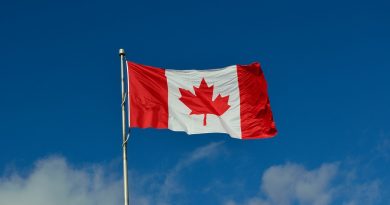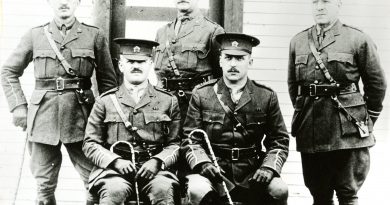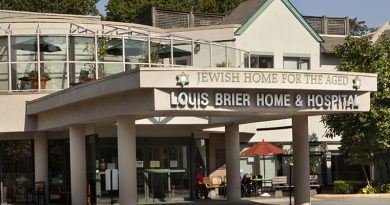1918
Above: Vancouver Symphony Orchestra [on stage at] Orpheum Theatre (761 Granville Street) Vancouver B.C.
[Image: City of Vancouver Archives CVA 99-5311 ]
*****************************************
You’ll note that these years include events listed under “Also in . . .” These are events for which we don’t have a specific date. If YOU know the specific date of an event shown there, please notify us . . . and cite the source! Many thanks!
*****************************************
January 5 Dallas Murray ‘Dal’ Richards, named for Dr. Dallas Perry, the man who delivered him today at Vancouver General Hospital on January 5, 1918, has been playing music for us for 70 astonishing years.
January 24 Mary Ellen Smith was the first woman to run and be elected an MLA in B.C. It was a by–election in the Vancouver Centre riding. This was also the first time women could vote in a provincial election . . . unless they were native or Oriental.
January A cannery in Steveston, built in 1889/90, was converted into a shipyard. Today it is known as Britannia Heritage Shipyard, the oldest surviving collection of cannery/shipyard buildings on the Fraser.
February 28 Vancouver’s firefighters became the first and only Canadian members of the International Association of Firefighters, headquartered in Washington, D.C.
February The vessel War Puget is launched, the first for Lyall Shipyards of North Vancouver.
March 6 John Oliver, a Delta farmer who had been minister of agriculture and railways, became premier of B.C. “Honest John” presided over the establishment of government-run liquor stores. People called them “John Oliver’s Drugstores.” Oliver in the Okanagan is named for him. He would hold the office of premier until his death in 1927.
April 14 Daylight Saving Time was introduced to British Columbia. (The first season will end October 26, 1918.)
April 15 Broadcaster Jack Webster was born in Glasgow.
April Watson Gloves was founded by John Watson and Wayne Stanley. Every weekday, Watson cut the strong Canadian leather and Stanley sewed it into gloves.
On Saturday,the two men would go to the wharves and sell the gloves that they had crafted during the week to workers gathered at Vancouver’s docks. The company is still going strong, makes more than 1,000 pairs of gloves daily. See their web site here.
May 10 The blackest day in Vancouver Fire Department history when No. 11 hosewagon en route to an alarm struck a streetcar at East 12th Avenue and Commercial Drive, killing four of its five-man crew.
May 14 A fire in Steveston destroyed three canneries, three hotels, numerous residences and much of the retail district. The Chinese and Japanese sections south of Moncton Street were razed, leaving 600 homeless.
May 18 The first grain shipment out of Vancouver via the Panama Canal. Five ships took 800,000 bushels of wheat to Europe.
May 24 The vote for all women for federal elections is established by The Canada Elections Act.
May 27 The Geological Survey of Canada opened its Vancouver office under Charles Camsell. The GSC’s website (click on name to access) says the office was required “to keep more closely in touch with prospecting and mining development throughout the province and in Yukon Territory, to work more closely in co-operation with the Provincial Department of Mines, and to act as a local distribution office for reports, maps and other geological information.” The office was an immediate success as prospectors, exploration geologists and mining engineers availed themselves of its maps and reports, as well as its highly relevant library and its geological expertise.
May The provincial government took over the PGE Railway on the north shore when it ran into financial trouble. The service had become unreliable, and the railway had shown no sign of attempting to complete the Howe Sound portion of its track.
June 17 Benjamin Tingley Rogers, sugar manufacturer, died in Vancouver at age 52. His handsome mansion, Gabriola, on Davie Street was sold and Mrs. Rogers moved into Shannon, a new mansion in Shaughnessy. (Today, Gabriola is a restaurant named Romano’s Macaroni Grill, surely one of the most beautiful eateries in North America.)
June An eight-day strike at North Shore Shipyards, followed by a streetcar strike and a Dominion postal workers strike in July.
August 1 Gerald “Cap” Hobbis, bicycle store owner, was born in Vermilion, Alberta.
August 2 The Vancouver Trades and Labor Council conducted a widely observed 24-hour general strike, the first in Canadian history, in memory of martyred labor leader Albert “Ginger” Goodwin. The strike was called off in the face of a riot by returned soldiers who broke into the Labour Temple and badly beat up two men who were forced to kiss the flag.
September 4 Vancouver’s first plane crash. A flying-boat—an aircraft with a hull-shaped fuselage for operation from water—the H-2, crashed in the West End after an engine failure at 1,500 feet. Piloting the little plane was Lt. Victor Bishop of the RAF, a seasoned pilot who had seen (and would see more) action in the First World War. Bishop’s plane dropped like a stone and fell on the roof of a house owned by Dr. J. C. Farish at the corner of Bute and Alberni Streets. Bishop was not seriously injured. In fact, he stepped out of the plane into the upstairs hallway of the house and, with the assistance of one of the residents, walked down the stairs to the front door and outside through a gathered crowd to a waiting ambulance.
September 8 Hotelier Tommy Roberts was shot dead by a masked intruder during a card game in Vancouver.
September 9 The Surrey Board of Trade is established.
September 24 Port Coquitlam holds a sale of property for arrears of taxes, but there are not many buyers, and the city retains ownership of much of the land, gradually sells it off in the 1920s.
October 5 The Spanish flu epidemic that killed more people during the First World War than the war itself hit Vancouver. The first reaction was overconfidence, and even a bit of levity as the “grippe” seemed to be under control. The Province editorial cartoonist had early fun with weird ways to beat the bug. The levity soon stopped. Churches and theatres closed, late shopping was banned. By November 14 there were 400 dead in Vancouver alone. Not until the end of November was the worst over. (A new book on the subject by Ian Macdonald is out: Dr. Fred and the Spanish Lady: Fighting the Killer Flu.)
October 17 The Ubyssey first appeared under that name. The paper began as a staid and sober weekly, but that was soon to change. (Trivia: Actress Rita Hayworth was born the same day.)
October 19 The first president of the University of B.C., Dr. Frank Wesbrook, died at 50. He was an immensely popular man, and his death at such an early age was particularly saddening. He was succeeded by Leonard Sylvanus Klinck, who would serve to 1944.
October 25 The worst disaster in coastal history, when the Canadian Pacific Ship Princess Sophia sank. Stranded on a reef in a severe snowstorm off the Alaskan coast, every berth occupied, the crowded luxury coastal steamer was thought to be safe, anchored firmly. “Her captain, L.P. Locke, was one of the most experienced and most respected mariners on the coast.” The passengers, most from the Yukon, played cards and wrote letters. Somehow the Sophia slipped off the reef during the night and sank. All 343 people aboard, 63 of them crew members, were lost. The only survivor was an oil-soaked dog found later wandering on the shore. Writers Betty O’Keefe and Ian Macdonald have written Final Voyage of the Princess Sophia: Did They All Have to Die? (1998)
November 11 Greater Vancouver celebrates Armistice and the end of the Great War. The streets are jammed with thousands of celebrants.
November 12 Adam Urias dePencier, Anglican priest, Bishop of New Westminster, president of the Anglican Theological College, received the Order of the British Empire from King George V.
December 7 A moderate earthquake tremor stopped the clock on the Vancouver Block on Granville Street.
December 13 The Terminal City Club, a prominent private businessmen’s club, burned its mortgages and notes in a lively and crowded ceremony. “Mayor [Robert] Gale,” the Province reported, “called on two of the original endorsers of the notes, Messrs. John Ross and George E. Trorey . . . (They) were given the original documents, whereupon matches were promptly applied and the notes burned merrily while the orchestra struck up Keep the Home Fires Burning.”
The club, formed Dec. 5, 1892, built the Metropolitan Building as its home in 1909, renting out upper floors for offices. They now inhabit a handsome building at 1021 W. Hastings.
December 15 Vancouver established its first traffic department. Constables directing traffic wore white gloves.
Also in 1918
Women got the federal vote.
The oldest magazine publishing in British Columbia, Harbour and Shipping, began.
Bruce Hutchison, 17, began his lifelong career in journalism as a high school sports reporter for the Victoria Times. He will join the Vancouver Sun in 1938. Click here for an excellent short bio.
The Opsal Steel building, originally occupied by Columbia Block and Tool Co., was built.
The first Parent Teachers Association in Vancouver was organized, between Dawson and Aberdeen Schools.
Land was left vacant at Cambie and Hastings Streets, after the old provincial law courts were demolished. Funds to develop a park there were donated by the Province newspaper, at that time right across the street from the new park, which would be named Victory Square (to commemorate victory in the First World War.)
The Worker’s Compensation Board’s head office was moved from Victoria to 402 Pender Street in Vancouver to facilitate faster handling of claims for the majority of claimants. They will move in 1929 to 411 Dunsmuir.
A four-cycle heavy duty marine engine was developed by Easthope Brothers of Vancouver for the Fraser River fishing industry. Costing about $150, the Easthope engines soon became famous.
Future city archivist Major J.S. Matthews returned to Vancouver from war service to an estranged wife. He will remarry.
R.H. Gale became mayor of Vancouver. He’s in the photo on our home page, the man in the middle wearing a boater and with his leg up on the running board. (Whaddaya mean, what’s a boater, and what’s a running board?) Gale would serve to 1921. Fearful that communist unions would take over workplaces and society in general, during Gale’s tenure the city set up a conciliation committee for settling disputes between itself and its employees following formation of the Vancouver City Hall Employees Association.
Thomas George Shaughnessy, 65, stepped down as president of the C.P.R., but remained chairman until his death in 1923 at age 70.
Shipbuilding on False Creek was now Vancouver’s largest industry.
Dr. Robert Edward McKechnie, a distinguished surgeon, became UBC’s second Chancellor and retained that office until his death in 1944.
Garnet Gladwin Sedgewick, a Shakespearean scholar, joined UBC’s English Department.
Realtor Henry Ceperley bequeathed Vancouver’s second supervised playground.
Famed actress Sarah Bernhardt appeared at the Orpheum. Huge crowds the first day tapered off when it was realized she acted in French. (Note: the most expensive ticket was 85 cents.)
Harry Gardiner, the “Human Fly” climbed up the outside of the World Building (known today as the old Sun tower).
Frank Barnard, street car system founder and incumbent lieutenant-governor, was knighted by King George V. “A living link of the industrialized B.C. with that of the pre-railroad and Crown colony days.”
Provincial botanist John Davidson founded the Vancouver Natural History Society.

![Vancouver Symphony Orchestra [on stage at] Orpheum Theatre (761 Granville Street) Vancouver B.C.](https://vancouverhistory.ca/wp-content/uploads/2020/12/78a5af6d-a2af-48e2-8a12-9172e84faec3-A17807-800x445.jpg)


